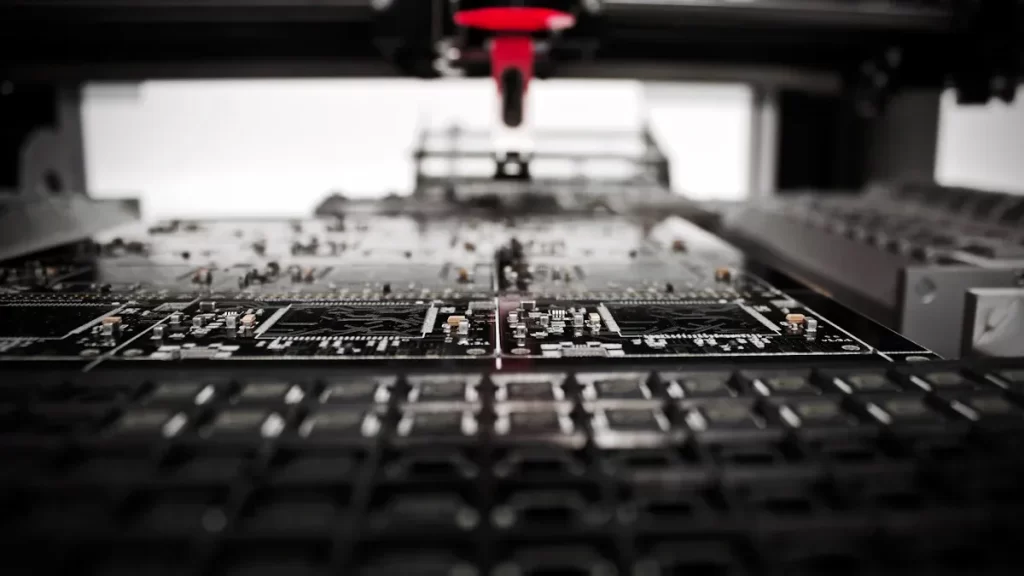
CONTENTS
- Key Takeaways
- What Does a Full Turn-Key PCB Manufacturer Offer?
- How Turnkey PCB Assembly Differs from Other Approaches
- Benefits of Choosing a Full Turn-Key PCB Manufacturer
- Steps to Begin with Turnkey PCB Assembly
- FAQ
Key Takeaways
- Full turn-key PCB manufacturing covers design, component sourcing, assembly, testing, and delivery under one roof.
- Streamlines production, reducing lead times by 60% compared to traditional methods.
- Enables cost savings through bulk purchasing and minimized rework, with defect rates as low as 2%.
- Single-point communication and rigorous quality control ensure consistent reliability and faster time-to-market.
What Does a Full Turn-Key PCB Manufacturer Offer?
PCB Design and Prototyping
- Expert design support to translate concepts into functional PCBs.
- Prototyping to validate designs before mass production, reducing errors.
Quality Assurance Steps:
| Evidence Type | Description |
| Data Collection | Monitor critical dimensions post-production |
| Process Capability Studies | Analyze tool wear and operator impact |
| Continuous Improvement | Refine tolerances with manufacturing feedback |
Component Sourcing and Procurement
- End-to-end component procurement from trusted suppliers.
- Digital supply chain management to avoid delays and ensure quality.
PCB Fabrication and Assembly
- Integrated fabrication and assembly under one facility for seamless workflow.
- Advanced techniques ensuring high first-pass yields (95–98%).
Turnkey vs. Traditional Processes:
| Aspect | Turnkey PCB Assembly | Traditional Separated Processes |
| Lead Times | Shorter (4–5 weeks) | Longer (10–12 weeks) |
| Design Revisions | Faster iteration | Delayed by vendor handoffs |
| Scalability | Smooth transition from prototyping to mass production | Requires new vendor onboarding |
Testing and Quality Assurance
- In-circuit testing, functional testing, and optical inspection.
- Performance metrics:
| Metric | Value Range |
| Order Fulfillment Rate | 90–98% |
| Scrap Rate | 2–5% |
| First Pass Yield (FPY) | 95–98% |
Packaging and Delivery
- Anti-static and shock-resistant packaging.
- Delivery performance benchmarks:
| Metric | Industry Benchmark |
| On-Time Delivery Rate | 90–98% |
| Customer Satisfaction | 70–90% |
How Turnkey PCB Assembly Differs from Other Approaches
Full Turn-Key vs. Partial Turn-Key
| Aspect | Partial Turn-Key | Full Turn-Key |
| Responsibility | Client supplies components | Manufacturer handles all |
| Control | Higher client involvement | Minimal client coordination |
| Advantages | Flexibility in component choice | Streamlined end-to-end process |
Full Turn-Key vs. Contract Manufacturing
| Aspect | Turnkey PCB Assembly | Contract Manufacturing |
| Lead Times | Shorter, unified workflow | Delayed by vendor logistics |
| Quality Consistency | Uniform standards | Inconsistent across vendors |
| Accountability | Single-vendor responsibility | Split accountability |
Benefits of Choosing a Full Turn-Key PCB Manufacturer
Cost Efficiency
- Bulk component pricing reduces material costs (e.g., 23% savings for TechInnovate).
- Eliminates repeat processes and transportation fees.
Simplified Communication
- Single point of contact reduces miscommunication.
- Streamlined coordination from design to delivery.
Faster Production Timelines
- Concurrent design, sourcing, and assembly shorten cycles.
- Prototype-to-production acceleration for quick market entry.
Superior Quality Control
- Design for Manufacturability (DFM) and in-process reviews.
- Quality metrics:
| Metric | Turnkey PCB | Traditional PCB |
| First Pass Yield | 95–98% | 98–99% |
| Defects Per Million | 500–1000 | 50–500 |
Steps to Begin with Turnkey PCB Assembly
Selecting a Manufacturer
| Criteria | Description |
| Manufacturing Expertise | Handle complex designs and reliability needs |
| Material Quality | Certifications for performance materials |
| Production Capacity | Scale from prototyping to mass production |
Submitting Design Documentation
- Provide Bill of Materials (BOM), Gerber files, and testing specifications.
- Documentation hierarchy:
| Type | Purpose |
| Design Inputs | Define device requirements |
| Design Outputs | Approved schematics and layouts |
| Verification | Ensure outputs meet inputs |
Prototyping and Production Approval
- Prototype testing to identify design flaws.
- Advanced Product Quality Planning (APQP) steps:
| APQP Outputs | PPAP Elements |
| Test Production Run | Part Submission Warrant (PSW) |
| Validation Testing | Design FMEA (DFMEA) |
Production Tracking and Delivery
- Key performance indicators:
| KPI Name | Industry Average |
| Production Cycle Time | 12 hours |
| On-Time Delivery | 97% |
FAQ
- What’s the difference between full and partial turn-key?Full turn-key handles all processes, while partial requires client-supplied components.
- How long does full turn-key manufacturing take?Typically 4–5 weeks, 60% faster than traditional methods.
- Can designs be revised after submission?Yes, revisions are possible during the prototyping phase.
- Are turn-key services cost-effective?Yes—bulk purchasing and streamlined processes reduce overall costs.
- What quality tests are included?In-circuit testing, functional testing, and automated optical inspection (AOI).
